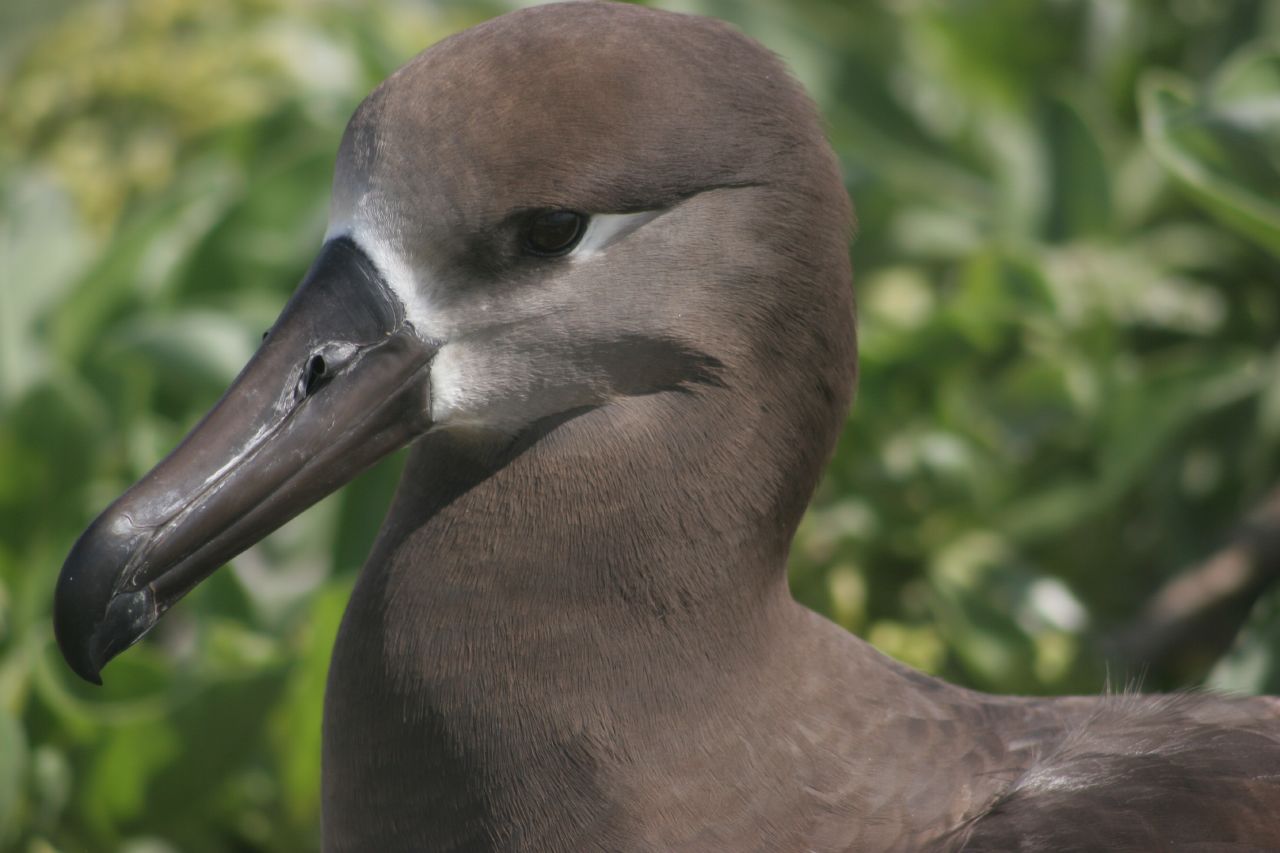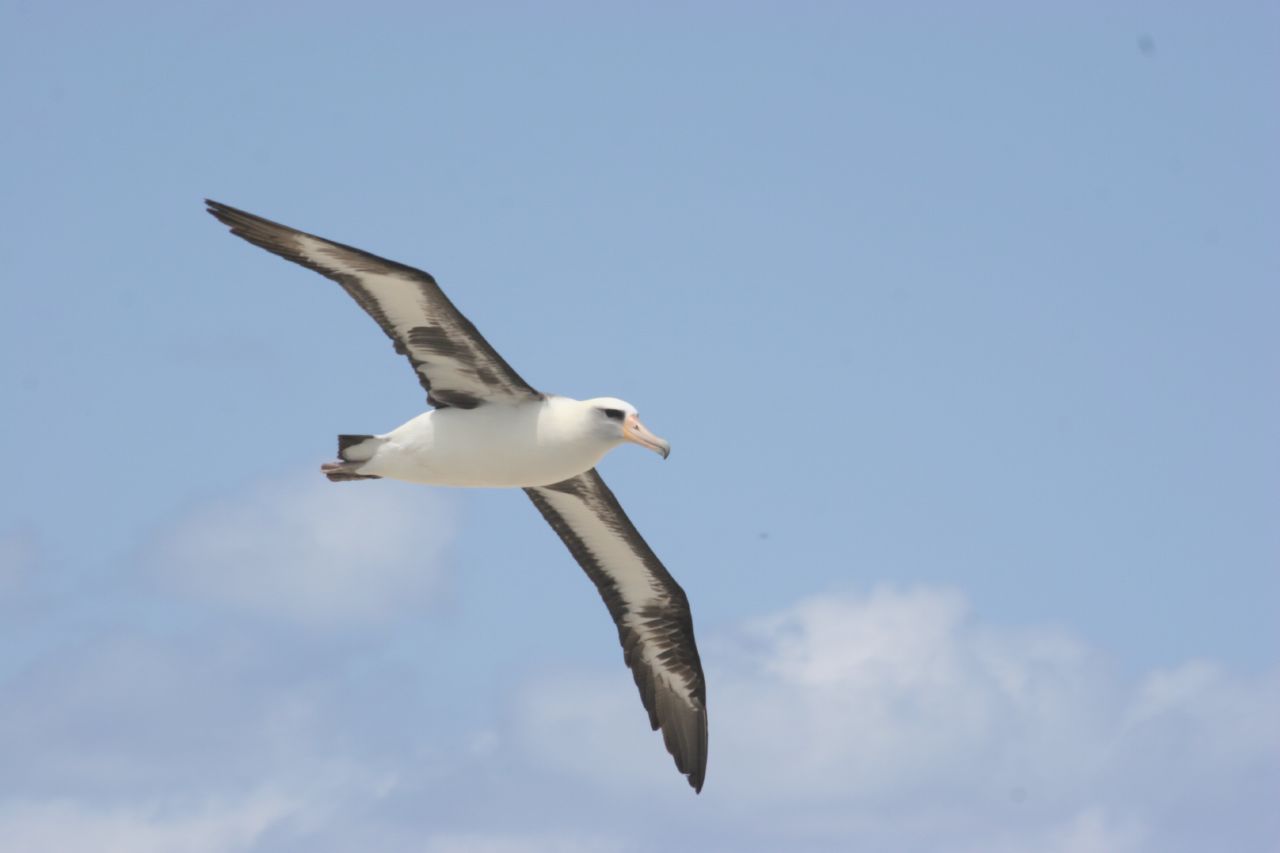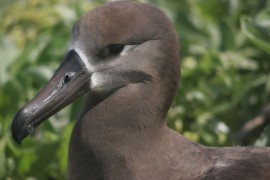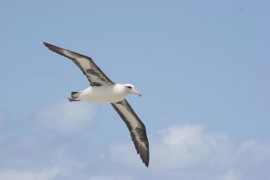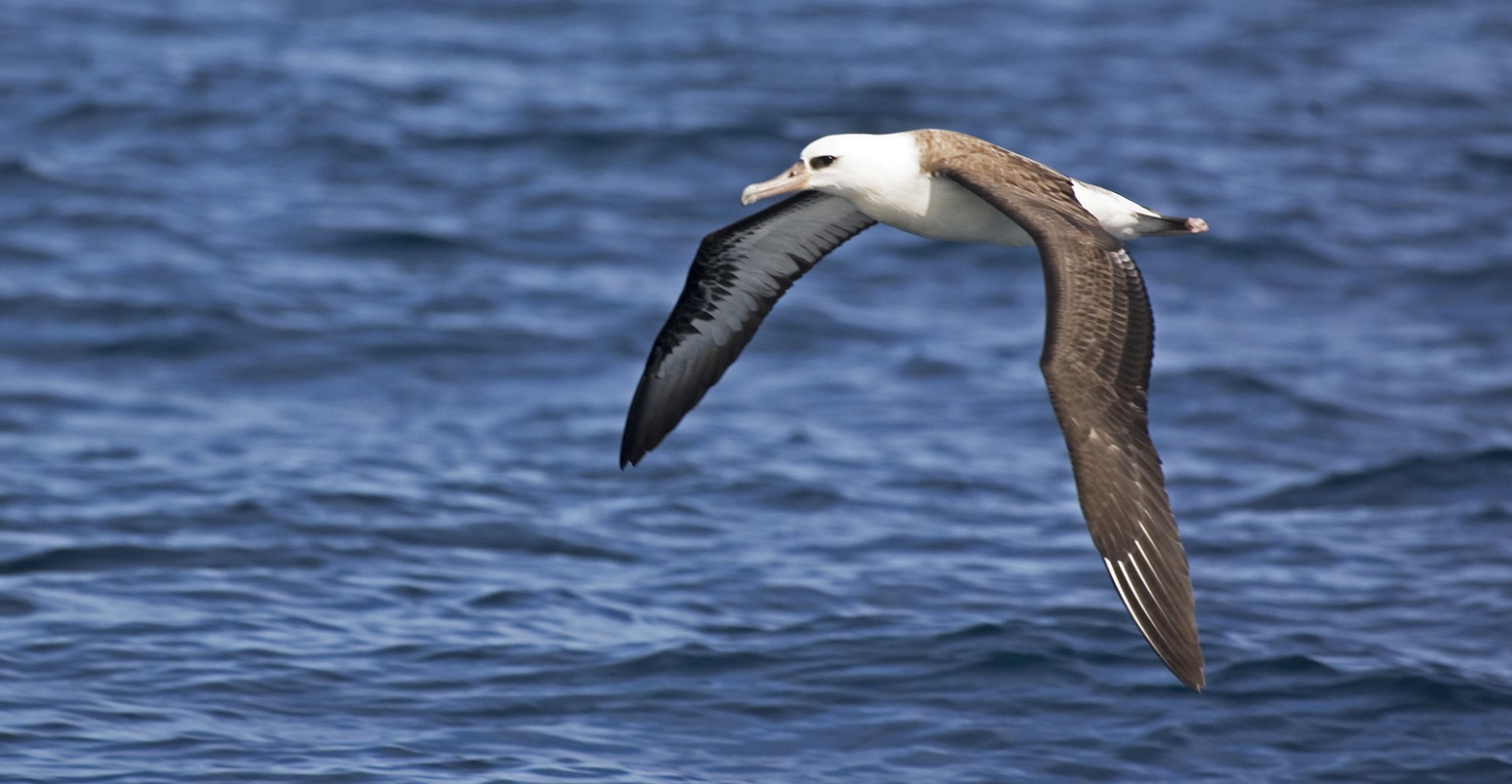
The albatross, El Niño and climate change: a tale of mixed fortunes
Roz Pidcock
06.08.16Roz Pidcock
08.06.2016 | 4:32pmOriginally a good luck omen for seafarers, but now more often a metaphor for the cursed, a new study hints at which could be more fitting for how albatrosses will fare under climate change.
These feathered giants spend most of their time in the air, hitching a lift on the wind and travelling thousands of miles to faraway feeding grounds.
A new study that satellite-tracked North Pacific albatrosses for 10 years suggests stronger westerly winds during El Niño give the birds an in-flight boost, ultimately increasing breeding success.
La Niña tends to have the opposite effect, however, making foraging journeys more arduous and lessening the odds of chicks surviving to adulthood.
As well as the natural ups and downs caused by the slide in and out of El Niño and La Niña, albatrosses are affected by human-caused climate change, too.
While there may be short-lived benefits for some albatross species, these are likely to be outweighed in the long run, lead author Prof Lesley Thorne tells Carbon Brief.
Taking flight
Reaching up to three metres, the albatross has the biggest wingspan of any bird. This makes them extremely efficient flyers, the paper notes:
Bethany Clark, a PhD researcher at the University of Exeter, whose work looks at how birds respond to environmental changes, but who wasn’t involved in the research, tells Carbon Brief:
While their graceful flying tactic might saves the albatross energy during flight, the upshot is that any changes in wind strength or direction can have a big impact. The paper explains:
Satellite-tracking
Most albatross species breed in the Southern Ocean. But today’s study looks at two species of Albatross native to the central North Pacific – the black-footed albatross and Laysan albatross.
The new study tracked individuals over a 10-year period between 2002 and 2012, looking specifically at how their flight patterns are affected by El Niño and its colder sibling, La Niña.
The two phases of the El Niño Southern Oscillation (ENSO) have opposite wind signatures. The paper explains:
To track the birds’ movements over time, the scientists attached satellite transmitters to the feathers of the birds, which periodically beamed their position back to a receiver on the ground.
The team tagged 107 Laysan and 108 black-footed albatrosses at Tern Island in the Northwest Hawaiian Islands, also home to thousands of seabirds, monk seals and green sea turtles.
If you’re curious about how scientists go about tagging a giant bird, here is a video by Dr. Steve Votier from the University of Exeter, who wasn’t involved in the new research, to explain.
Riding the winds
Albatrosses are generally thought to benefit from stronger winds because it means they expend less energy and can cover even more ground during fishing trips. Clark explains:
For this reason, the scientists behind the new study expected the birds to receive a boost during periods when the trade winds are strongest. But they found a more complicated picture.
Whether or not the birds saw the benefits of stronger winds depended to a large extent on the species in question and which stage of their breeding cycle was affected, the paper notes.
Breeding time
Albatrosses mate for life. Laysan and black-footed birds return to breeding grounds in the Northwest Hawaiian Islands each year in November and December, where the female typically lays a single egg.
A female albatross can have dozens of chicks over her lifetime. The world’s oldest albatross – a female Laysan called Wisdom – is still raising chicks at the age of 65, and even has a children’s book named after her.
While the eggs are incubating, adult albatrosses have the time and freedom to travel thousands of miles in search of food, travelling wherever the most favourable winds take them. Both parents take it in turns to venture away from the nest for up to 30 days at a time, leaving the other one to incubate and nurture the egg. Thorne tells Carbon Brief:
During El Niño, the winds around the albatrosses incubation habitat strengthens. The scientists found this gave the birds an extra in-flight boost during feeding trips. They tended to gain weight over the breeding season, meaning they stayed in better overall health.
This was only true for Laysan albatrosses, however. Their black-footed cousins forage in waters much further south, gaining little benefit from the stronger trade winds. The paper notes:
Looming La Niña
Once the chicks are born in June or July, the picture changes. The hungry mouths need feeding regularly, and the emphasis for feeding trips shifts from long and leisurely to short and efficient.
The necessity to keep fishing trips to a few days means the birds are unable to take advantage of favourable winds, losing the benefit they had enjoyed before.
During a La Niña, the winds strengthen around their brooding grounds and the birds can end up expending more energy than usual, Thorne tells Carbon Brief:
The extra energy expended may partly explain why albatross tend to have lower reproductive success during La Niña events, says Thorne. With a La Niña now looking very likely to develop by the end of 2016, this could be true of this year’s North Pacific cohort.
But La Niña doesn’t necessarily spell bad news for all albatrosses everywhere, says Thorne.
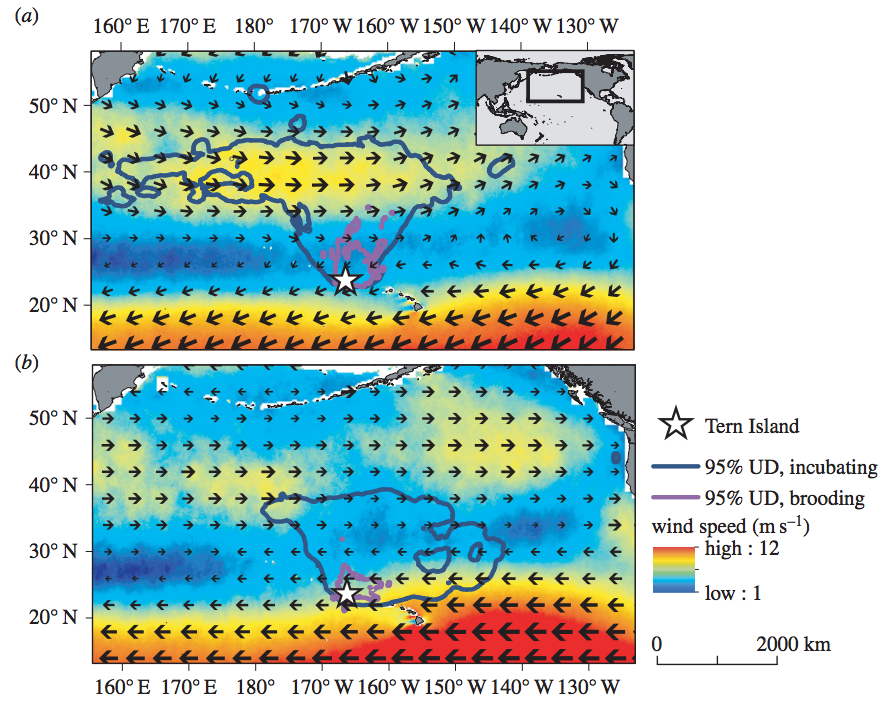
Wind speed and direction in the North Pacific during El Niño (a) and La Niña (b). Albatross foraging routes are shown for both the incubating and brooding phases for Laysan (a) and black-footed albatrosses (b), respectively. Source: Thorne et al., (2016)
Climate change
So, how is climate change likely to affect the strength or frequency of El Niño and La Niña?
The answer to this question is not yet clear, says Thorne. But the broad long-term changes in the climate projected by models are for trade winds to weaken while mid-latitude westerly winds strengthen and move poleward.
Taking a long view, this is unlikely to be good news for North Pacific albatrosses, says Thorne:
The effects of climate-induced wind changes aren’t limited to albatrosses, Clark explains:
Climate change will carry consequences other than changes in winds, too. Shifts in the locations of feeding areas will be an important factor, says Thorne.
Further shifts to the north are predicted in the future under climate change, she says, noting that there may be other impacts on food availability that are far less straight-forward to predict.
Main image: Laysan Albatross, Phoebastria immutabilis flying over the sea. Credit: hstiver/Getty Images.
Thorne, L.H. et al., (2016) Effects of El Niño-driven changes in wind patterns on North Pacific albatrosses. Royal Society Interface. DOI: 10.1098/rsif.2016.0196



